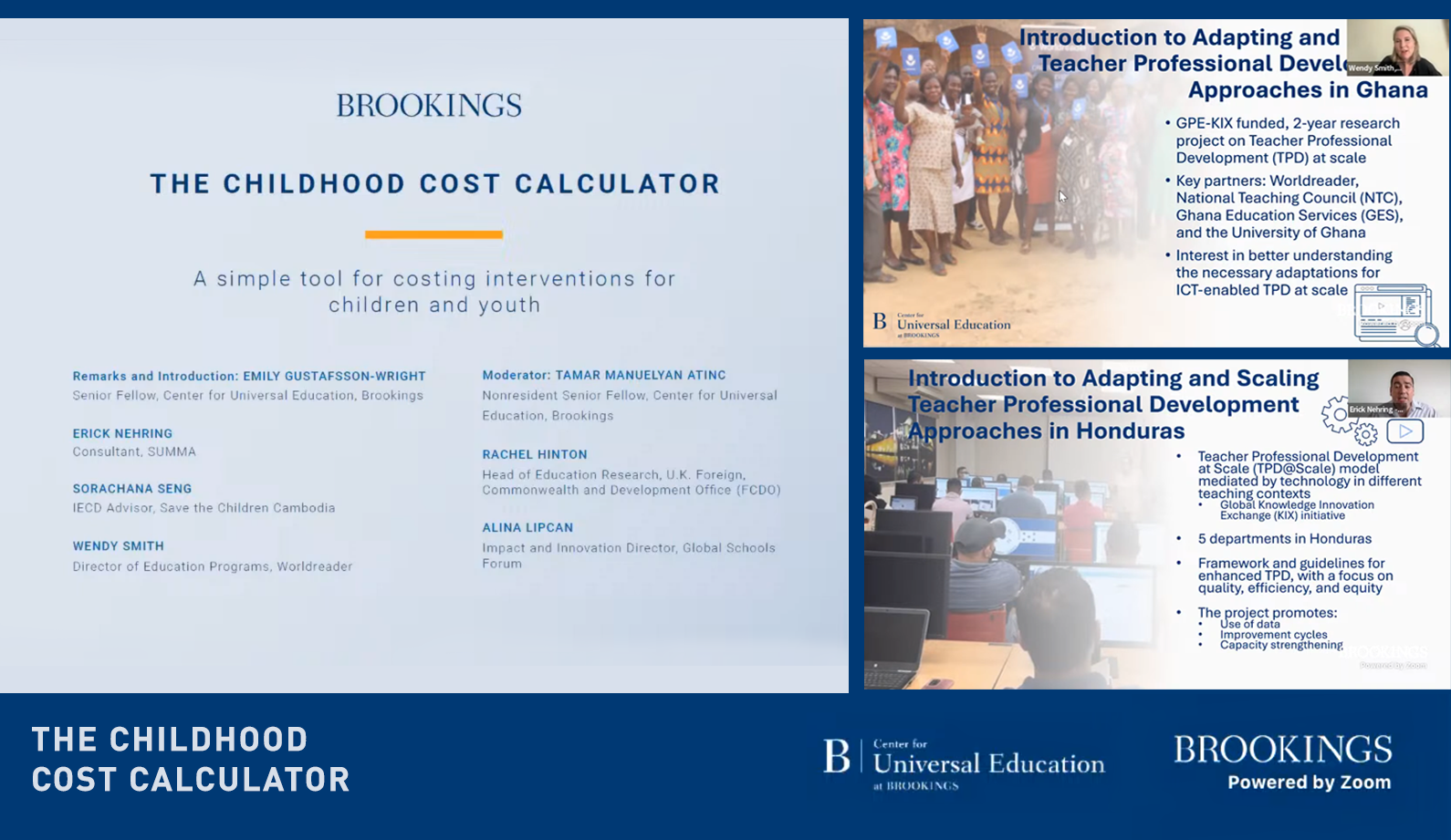At the launch of the Childhood Cost Calculator (C3) through a webinar on June 29, 2023 subtitled “A simple tool for costing interventions for children and youth”, it was highlighted that a clear understanding of program costs and cost breakdown is seen as crucial in informing decisions among governments as well as multi and bilateral implementers in addressing global crises affecting children and youth.
Emily Gustafson Wright, a senior fellow at the Center for Universal Education at the Brookings Institution, explained that cost data are needed for advocacy, for priority setting, for budgeting and planning, for managing program activities, and also for accountability.
“Cost data are, of course, not the only type of data or information needed, but they are often neglected. We need cost data for cost efficiency analysis, for cost benefit analysis, and cost effectiveness analysis.”
The development of Childhood Cost Calculator (C3) – a Brookings initiative which is an online, user-friendly tool for completing cost analysis of child and youth-related interventions across different sectors including education – was born out of a decade of researching and piloting activities. It’s a derivative of the Standardized Early Childhood Development (SECT), a cost calculator tool that was piloted in several countries but was found to be not user-friendly.
The webinar featured experiences of countries that piloted the use of the tool. TPD@Scale Ghana (by Worldreader) and Honduras (by SUMMA) from the project “Adapting and scaling teacher professional development approaches in Ghana, Honduras, and Uzbekistan” – are among the teams that have piloted the use of the C3 tool alongside RAISE in Cambodia.
Through the use of the tool, the team from Ghana was able to come up with a cost comparison of various delivery approaches of TPD — Virtual vs. Face-to-Face vs. Hybrid.
“A lot of the use of the C3 tool is to understand where you are investing. But we are also able to learn how that initial investment in a TPD Platform, in an ICT-enabled TPD platform could be scaled and those will be amortized overtime, it will reduce over time,” shares Wendy Smith, Director of Education Programs, Worldreader.
For Honduras, apart from providing the team with a tool to compare costs and identify specific aspects of design and training processes pinpointing segments that could be more expensive, the utilization of C3 has made an impact on policy.
“This exercise triggered additional actions within the Secretary of Education like organizing costing teams, encouraging collaboration among different units within the Ministry of Education, fostering capacity building initiatives, facilitating the dissemination of information with stakeholders, and implementing a well-structured categorization system for the costing data,” explains Eric Nehring, consultant for SUMMA.
Cambodia, meanwhile, has realized through the tool that their program spends its budget more directly on its beneficiaries. For Sorachana Seng, IECD Advisor – Save the Children Cambodia, the achievement is spending more on project implementation itself than the overhead.
Wright explains that the C3 tool is useful for anybody. “This is available online and in a much more user-friendly format with accompanying user-guide. We expanded beyond early childhood to child and youth sectors. The idea is that it can be used by anybody — policymakers, funders, implementers, researchers.”
Read more about the Childhood Cost Calculator here. The C3 Tool can be accessed here.

